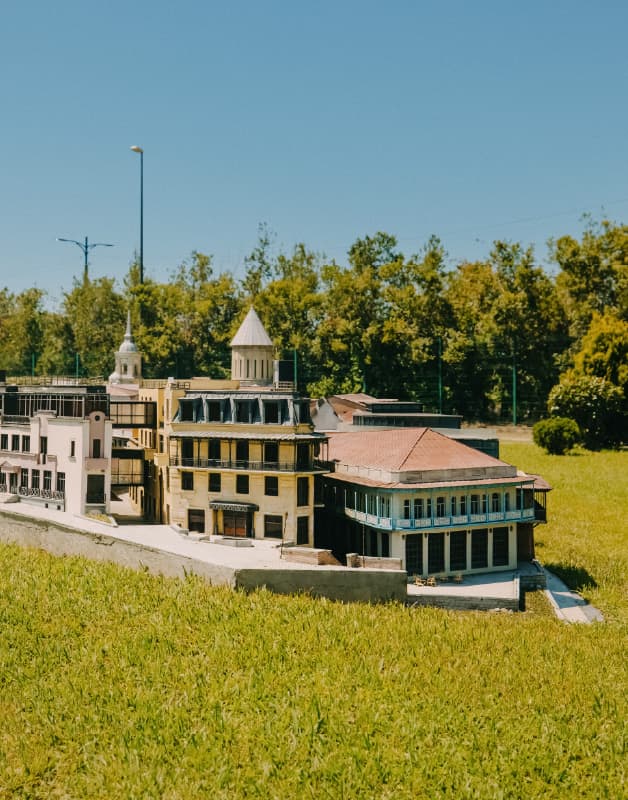Tbilisi’s Caravanserais

Tbilisi’s caravanserais were mainly concentrated around the Sioni Cathedral. The oldest surviving caravanserais dates back to the 17th century. The caravanserais housed merchants’ and craftsmen’s shops as well as guest rooms.
Most of the surviving caravanserais were built in the 19th century and are characterized by structural uniformity, although the history of caravanserais in the capital of Georgia dates back two centuries earlier. Besides serving as inns, they also functioned as centers for customs control and the organization of road trade - caravans traveling from Persia and Armenia often stopped there.
Did you know that...
1. The word “Karvasla” means “caravan house” in Persian. This term became established in Georgia during the 17th–18th centuries. Earlier, the term “funduk” was used to denote an inn.
2. Caravanserais / Karvasla included living quarters, shops, storage cellars, granaries, and yards for keeping livestock.
3. Notably, near the Sioni Cathedral stands the caravanserais built in 1650 by King Rostom, which in the early 18th century was transferred to the Bishop Domenti III of Tbilisi and thereafter was called the Tbilisi Karvasla. In 1818, Gevork Artsruni, an ethnic Armenian citizen of Tbilisi, built a large caravanserai on the site of an old 17th-century funduk. The complex included 33 hotel rooms and 24 shops and storage spaces. The building was visited by Russian Emperor Alexander II, who was greatly impressed by it. Artsruni’s Karvasla underwent adaptation and restoration in 1984. Today, it houses the Museum of Tbilisi History.
4. One of the most significant caravanserais is the building known as “Tekle’s Karvasla.” It was built in 1795 on the site of the “King’s Funduk,” which was destroyed by the Persians. It belonged to Tekle Batonishvili, daughter of King Erekle. The building is eclectic, with façades exhibiting European-Moorish, Classicist, and Islamic architectural elements.
1. The word “Karvasla” means “caravan house” in Persian. This term became established in Georgia during the 17th–18th centuries. Earlier, the term “funduk” was used to denote an inn.
2. Caravanserais / Karvasla included living quarters, shops, storage cellars, granaries, and yards for keeping livestock.
3. Notably, near the Sioni Cathedral stands the caravanserais built in 1650 by King Rostom, which in the early 18th century was transferred to the Bishop Domenti III of Tbilisi and thereafter was called the Tbilisi Karvasla. In 1818, Gevork Artsruni, an ethnic Armenian citizen of Tbilisi, built a large caravanserai on the site of an old 17th-century funduk. The complex included 33 hotel rooms and 24 shops and storage spaces. The building was visited by Russian Emperor Alexander II, who was greatly impressed by it. Artsruni’s Karvasla underwent adaptation and restoration in 1984. Today, it houses the Museum of Tbilisi History.
4. One of the most significant caravanserais is the building known as “Tekle’s Karvasla.” It was built in 1795 on the site of the “King’s Funduk,” which was destroyed by the Persians. It belonged to Tekle Batonishvili, daughter of King Erekle. The building is eclectic, with façades exhibiting European-Moorish, Classicist, and Islamic architectural elements.
